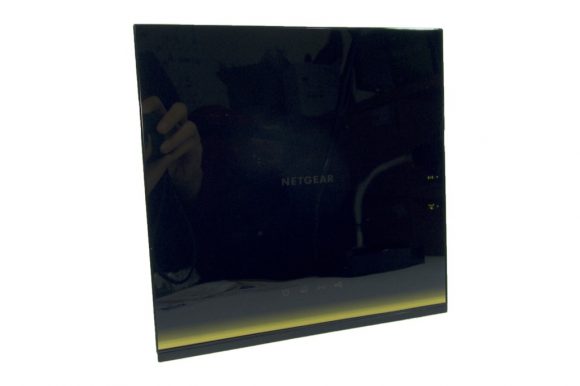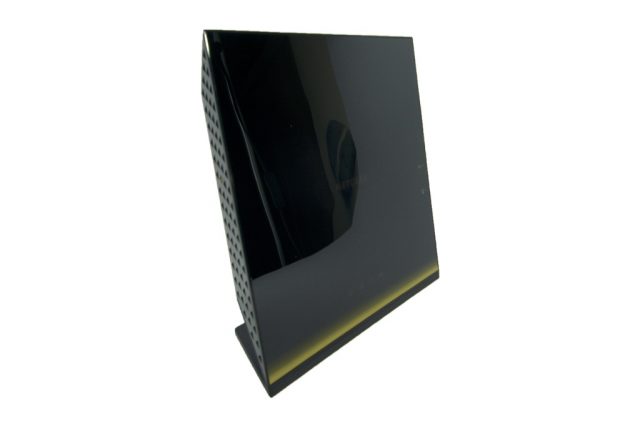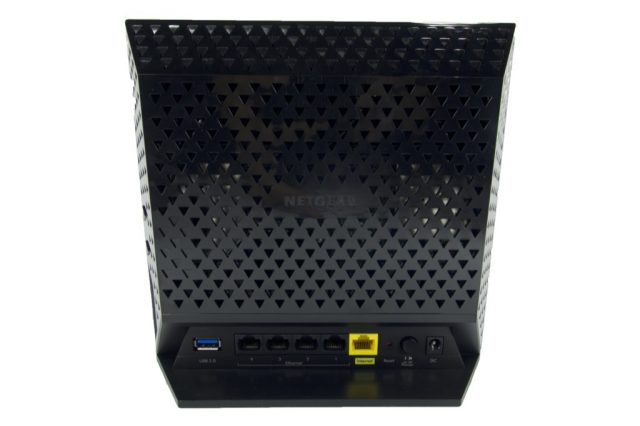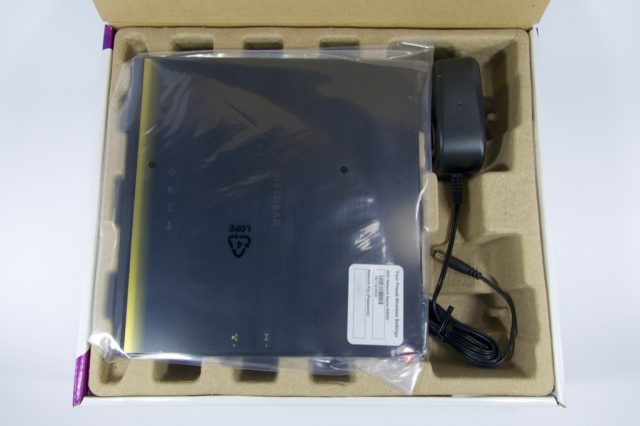
This is the second generation of Netgear’s R6300 wireless router. Netizens have come up with the R6300v1 and R6300v2 designations to differentiate between the two models because, unfortunately, Netgear did not update the model number. The only easy way to tell from the box which model you have is to look out for the USB 3.0 ports, which is only available on the 2nd generation R6300.
The R6300v2 has almost about everything you could ask for in a wireless router. It supports dual-band 2.4 GHz and 5 GHz 802.11a/b/g/n/ac with up to 1750 Gbps total bandwidth. It has one Gigabit Ethernet WAN ports, and four Gigabit Ethernet LAN ports. There is also one USB 3.0 port and another USB 2.0 port for attaching external storages and printers. The R6300v2 also has plenty of nice features.
One of the important features of the R6300v2 is “Beamforming+”. Now, let me digress a little to talk about this beamforming business. Beamforming isn’t completely new. It was specified as an optional feature of the older 802.11n standard, but IEEE (the international body behind these standards) did not actually define how this was to be implemented. When it came to 802.11ac, IEEE still allowed Beamforming to be optionally supported, but they specified exactly how Beamforming was to be implemented if any product wanted to claim to support it at all. This set the stage for Beamforming interoperability in 802.11ac.
Beamforming involves some signal processing techniques to manipulate the phase and amplitude of the signal transmitted from its antennas, so that constructive interference of the radio waves increases the signal strength at its destination. Or, to put it very simply, Beamforming focuses wireless signal on your devices.
A caveat with Beamforming is that both wireless devices, i.e. your wireless router and client device, must support Beamforming. Wireless devices needs to exchange information about their relative locations in order to optimise the transmitted signal. If your wireless router supports Beamforming, but not your nodebook, then Beamforming will not work.
Now, IEEE does allow vendors to add other techniques on top of the standard Beamforming specified in 802.11ac. Netgear has done that with Beamforming+. The main new feature of Beamforming+ is that it does not require client devices to support Beamforming. With the R6300v2’s Beamforming+ feature, your client devices can benefit from improved range and throughput even without themselves supporting Beamforming.
In my own tests at home, where my Samsung Galaxy S4 would not get any 5 GHz signal from my older router at a certain spot, and actually doesn’t even get full strength on 2.4 GHz, now gets very good signal on 5 GHz with the R6300v2. Perhaps the R6300v2 has a very much stronger transmitter, but I think more likely the Beamforming+ really works.
Let’s get back to the R6300v2. This is a big router. Physically, I mean. Nowadays, users expect their wireless routers to sport decent design, and I think in this respect, the R6300v2 is passable. It’s not the prettiest, but it wouldn’t look obtrusive in your living room. The front is a nice gloss finish, broken only by a couple of LED indicator lights at the bottom, and, I think we could have done without this one, a rather biggish lighted Netgear branding in the centre. The antennas are all internal, so there’s nothing poking out of its otherwise sleek shell.
The back of the R6300v2 has the usual ports and connectors. Starting from left, there’s a USB 3.0 port, 4 Gigabit Ethernet LAN ports, Gigabit Ethernet WAN port, reset button, a physical on/off push button switch, and the DC input.
The right side of the router has two buttons. One of them is for the WPS push button, and the other is a Wi-Fi on/off button. The latter is quite unusual. I suppose if you are one of those paranoid either about Wi-Fi drive-by attackers or the health dangers from emanating RF energy, you could easily switch off the Wi-Fi whenever you don’t need it. There’s also an additional USB port, albeit a 2.0 one, on this side of the unit.
Setting up the R6300v2 is easy. You could either use the included Netgear Genie application (desktop, iOS or Android), or you could just directly configure everything through the web interface. The usual suite of settings and controls are all there. You can configure separate SSIDs for 2.4 GHz and 5 GHz. There is guest SSID support, and that too you can have different ones for 2.4 GHz and 5 GHz.
The USB ports on the R6300v2 let you attach external storages and printers. The inclusion of USB 3.0 ports is welcome. External disks can be managed through the R6300v2, allowing you to configure shared folders, access control, etc.
In my setup, I have my Internet routed by pfSense. The Netgear R6300v2 only needs to be run in bridge mode. Now, different vendors call this feature by different names. But basically what I need is for the R6300v2 to be a bridge between my wired network which is served by pfSense, and wireless clients that connect to the R6300v2. My previous Linksys router calls this “bridge mode”. Netgear, however, calls this “Standalone AP Mode”. (The R6300v2 also has something called “bridge mode”, but it means something different.) Standalone AP mode works great for my use case.
When setup in Standalone AP Mode, understandably several things become inapplicable in the R6300v2. For example, you cannot apply QoS controls, firewall rules, port forwarding, UPnP, etc. Your gateway device should take care of this.
On the downside, the R6300v2 doesn’t include some features like a built-in iTunes server, or Time Machine support. The R7000 Nighthawk, the next up and currently the highest-end wireless router from Netgear (not available in some markets yet, like Singapore), supports Time Machine.
Conclusion
The R6300v2 is an all-around nice 802.11ac 1750 Gbps wireless router. It has great performance, complemented by good looks and nice feature set.
Pros:
- Great performance, both in range and bandwidth
- Looks good
- Good feature set, easy to setup and administer
Cons:
- No iTunes server and Time Machine support



Read this review page http://usemyreviews.com/wireless-router-reviews-price-comparison/ it will be helpful I think.